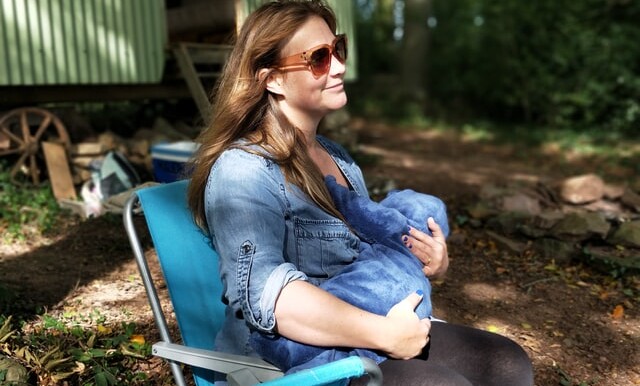No one expects you to be an expert at breastfeeding right off the bat – so don’t put this pressure on yourself. Not only do you have to learn how to do it, but so does your baby! Even if you’ve already breastfed one child, the next one can be different. But don’t stress – you’ll figure it out together. Here are a few tips to help you along.
Baby's first feeds
Feeding cues
Watching your baby’s body language can let you know when they’re getting hungry.
Early cues are:
- wriggling - baby is moving their arms and legs
- rooting – baby is moving their hands to their mouth, licking, poking out their tongue, moving their mouth, making sucking sounds, soft coos, or nuzzling towards the breast.
Mid cues are:
- fussing – making noises and arching their back
- crying now and then.
Late cues are:
- full cry or scream
- unable to settle
- tense body
- face turns red
- it’s more difficult to get a crying baby to latch. If their energy has gone into crying instead of feeding, they might be too tired to feed.
Finding a comfortable position for you
Some feeds can take a while, so get comfy. Choose a comfortable sitting or lying position so you don’t get stiff muscles in your back, shoulder or neck. Make sure you have things you may need beside you - a drink, snack, phone, remote, or toys and books for an older child.
How to hold your baby to breastfeed
There are different ways you can hold your baby to breastfeed. Find the ones that are comfortable for you.
Cross-cradle hold
This is often a good starting position while your baby latches properly. In the cross-cradle position, the baby’s head is supported with your hand at the base of their neck in a way that allows the baby to tilt their head back slightly. Your other hand is supporting your breast.
Cradle hold
This hold may be more comfortable for you once your baby has latched well, unless your breasts are heavy and need to be supported during feeding. If you can, release your hold on your breast and move your arm gently around the baby.
Rugby/underarm hold
You may find this hold comfortable if your breasts are heavy, or if you’ve had a cesarean.
Lying down
The lying down position can be comfortable if you’ve had a cesarean.
How your baby latches on to your nipple
Support your baby’s neck and shoulder with your fingers and thumb spread out so their head can tilt back slightly, rather than being pushed into the breast. This raises their chin off the chest so that they can open their mouth wide, and it keeps their nose clear so they can breathe.
Tickle your baby’s upper or lower lip with the nipple or a finger and wait for them to open their mouth wide with the tongue forward.
Bring your baby onto the breast. Their chin and lower jaw touch the breast first.
Your baby’s lips should be turned outward, almost in a pout, and cover more of the areola (the darker skin around the nipple) with the bottom lip than with the top lip.
When your baby is getting milk, they have a sucking-swallowing pattern. The baby opens their mouth wide, then they pause as they get a mouthful of milk, then they close their mouth. The longer the baby pauses with their mouth open, the more milk they’re getting. You can also see their ears wiggle as their jaw moves.
If breastfeeding doesn’t feel comfortable
If it doesn't feel comfortable for you – start again. Slip your finger into the corner of your baby’s mouth between their gums, with the soft side of your finger (not the nail) next to the lip so you gently break the suction.
How long will baby take to feed?
Let your baby drink for as long as they want from the first breast before swapping to the second breast. At each feed, babies get the thin foremilk first. This quenches their thirst, but you want to give them time to get the hindmilk, which is richer in fat content and high in calories.
Start feeding from the second breast first on the next feed (try putting a safety pin in your bra to remind you which one that is.)
Breastfeeding isn’t always easy, and it can take up to 6 weeks to establish. But don’t stress. Your midwife, lactation consultant, La Leche League, Plunket nurse or PlunketLine will help you if you need more support and information.
Supply and demand
Generally speaking, the more your baby drinks, the more milk your breasts will make. When your baby feeds, your brain tells your body to make more milk because supply is getting low. When your breast gets too full, your brain tells your body to slow down milk production.
If you feed baby often and with a good latch and milk transfer, your breasts will produce the milk your baby needs.
Breastfeeding NZ